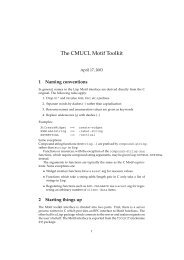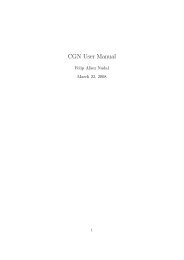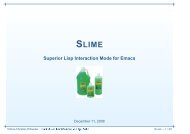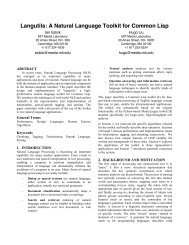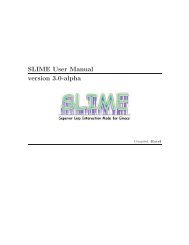SLIME User Manual - Common Lisp.net
SLIME User Manual - Common Lisp.net
SLIME User Manual - Common Lisp.net
- No tags were found...
Create successful ePaper yourself
Turn your PDF publications into a flip-book with our unique Google optimized e-Paper software.
Chapter 3: slime-mode 10A more subtle issue is that imperfect caching is used for the sake of performance. 1 Inan ideal world, <strong>Lisp</strong> would automatically scan every symbol for indentation changes aftereach command from Emacs. However, this is too expensive to do every time. Instead <strong>Lisp</strong>usually just scans the symbols whose home package matches the one used by the Emacsbuffer where the request comes from. That is sufficient to pick up the indentation of mostinteractively-defined macros. To catch the rest we make a full scan of every symbol eachtime a new <strong>Lisp</strong> package is created between commands – that takes care of things like newsystems being loaded.You can use M-x slime-update-indentation to force all symbols to be scanned forindentation information.3.4 Reader conditional fontificationslime automatically evaluates reader-conditional expressions in source buffers and “graysout” code that will be skipped for the current <strong>Lisp</strong> connection.1 Of course we made sure it was actually too slow before making the ugly optimization.






